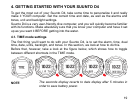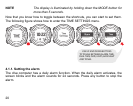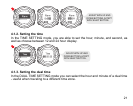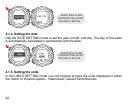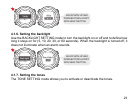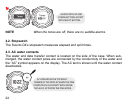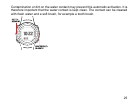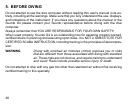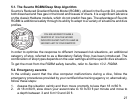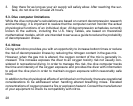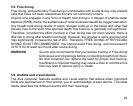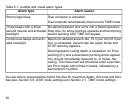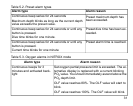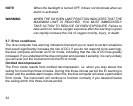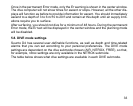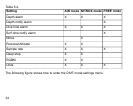
5.1. The Suunto RGBM/Deep Stop Algorithm
Suunto’s Reduced Gradient Bubble Model (RGBM), utilizedin the Suunto D4, predicts
both dissolved and free gas in the blood and tissues of divers. It is a significant advance
on the classic Haldane models, which do not predict free gas. The advantage of Suunto
RGBM is additional safety through its ability to adapt to a variety of situations and dive
profiles.
4
/
#
.
6
-
2
$
+
$
"
3
,
.
#
$
YOU ARE ADVISED TO MAKE A
DEEPSTOP AT 12 M. THE SECOND
INDICATOR SHOWS THAT YOU HAVE 58
SECONDS LEFT OF YOUR DEEPSTOP.
In order to optimize the response to different increased risk situations, an additional
category of stop, referred to as a Mandatory Safety Stop, has been introduced. The
combination of stop types depends on the user settings and the specific dive situation.
To get the most from the RGBM safety benefits, refer to Section 10.2. RGBM.
5.2. Emergency ascents
In the unlikely event that the dive computer malfunctions during a dive, follow the
emergency procedures provided by your certified dive training agency or, alternatively,
follow these steps:
1.
Assess the situation calmly and then move promptly to less than 18 m/60 ft.
2.
At 18 m/60 ft, slow down your ascent rate to 10 m/33 ft per minute and move to
a depth between 3 and 6 m/10 and 20 ft.
27



